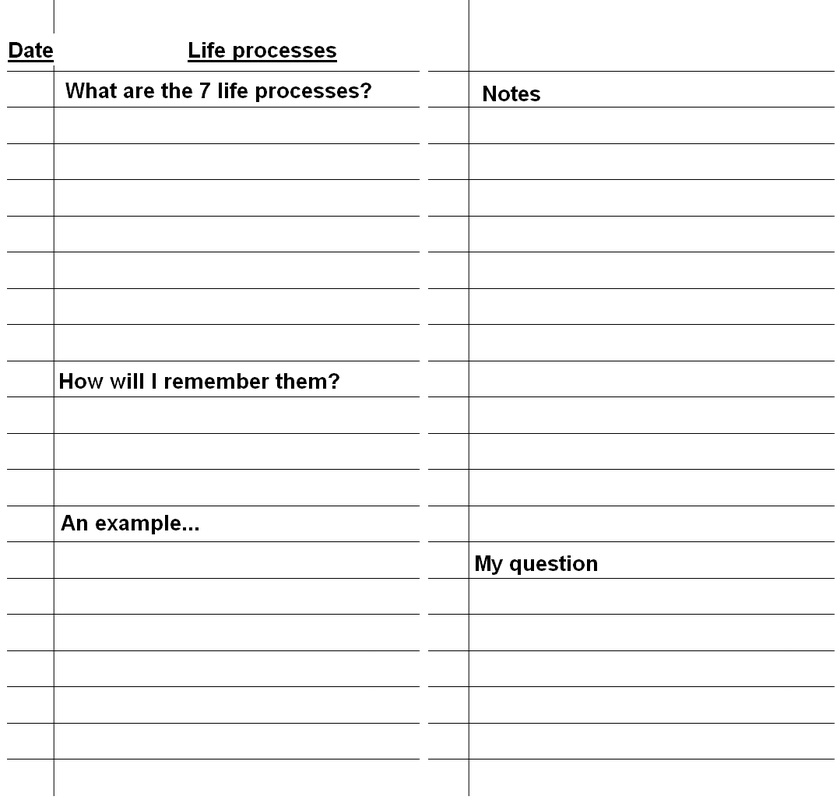IGCSE BIOLOGY
B1 characteristics of living organisms
|
Before you start you can look back at 7A Cells.
This is a really easy unit about how you know something is alive. If you only remember one thing: The seven life processes are movement, respiration, sensitivity, nutrition, excretion, reproduction and growth. |
This is the first of the 11 Biology units:
B1. Characteristics of Living Organisms B2. Cells B3. Enzymes B4. Nutrition B5. Transportation B6. Respiration B7. Coordination and Response B8. Reproduction B9. Inheritance B10. Energy Flow in Ecosystems B11. Human Influences on the Ecosystem |
Flipped LESSONS
Lesson 1
At the end of this lesson students will be able to:
1. List the seven life processes
2. Describe how they know something is alive or not using examples of the life processes it carries out e.g. Sunflower, robot, bread
Before you start the lesson make sure your notebook looks like this:
1. List the seven life processes
2. Describe how they know something is alive or not using examples of the life processes it carries out e.g. Sunflower, robot, bread
Before you start the lesson make sure your notebook looks like this:
- During the lesson you should watch the video and make notes. Remember you can always stop or rewind the video, you can also try the extra practice at the end.
- Make sure you answer the learning objective questions, add extra information in your own words on the right and then write your own question. This should be a question that interests you, it could be something you are not sure about or something you would like to discuss in the class.
Now CLICK HERE to watch the video for the class.
(later videos will be embedded in stampscience.com)
(later videos will be embedded in stampscience.com)
Extra practice:
- Try this excellent Bitesize activity on the life processes.
- Test your knowledge with the life processes matching game.
if you only remember one thing from this unit...
The seven life processes are movement, respiration, sensitivity, nutrition, excretion, reproduction and growth.

